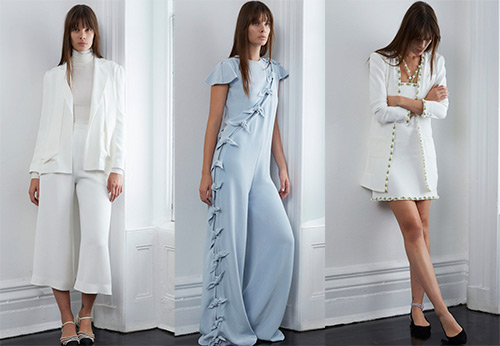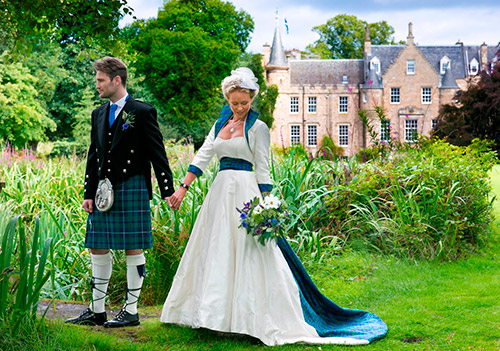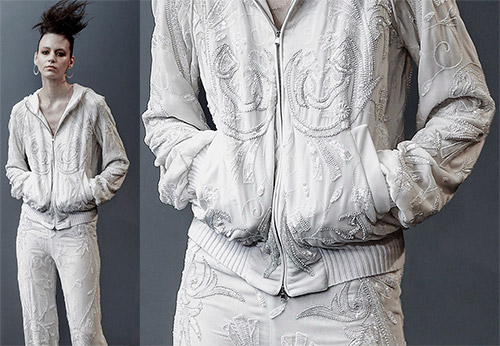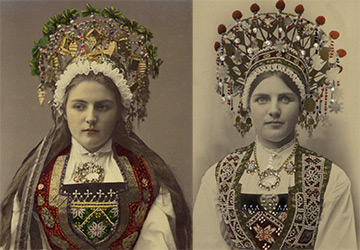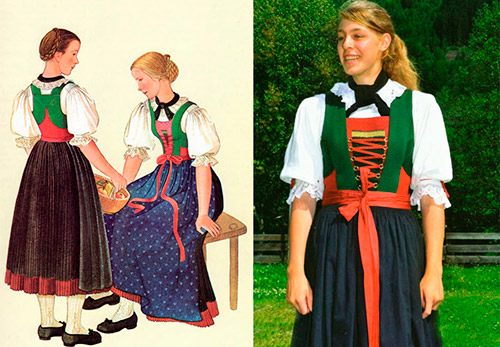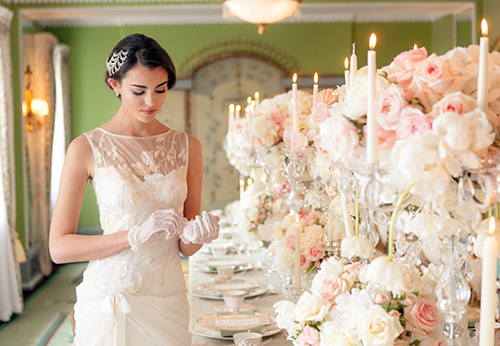Style
Women's and men's national costume of Mexico
Many people know the bright and colorful Mexican costume. Everyone, one way or another, imagines what huge sombrero hats and colorful Mexican ponchos look like.
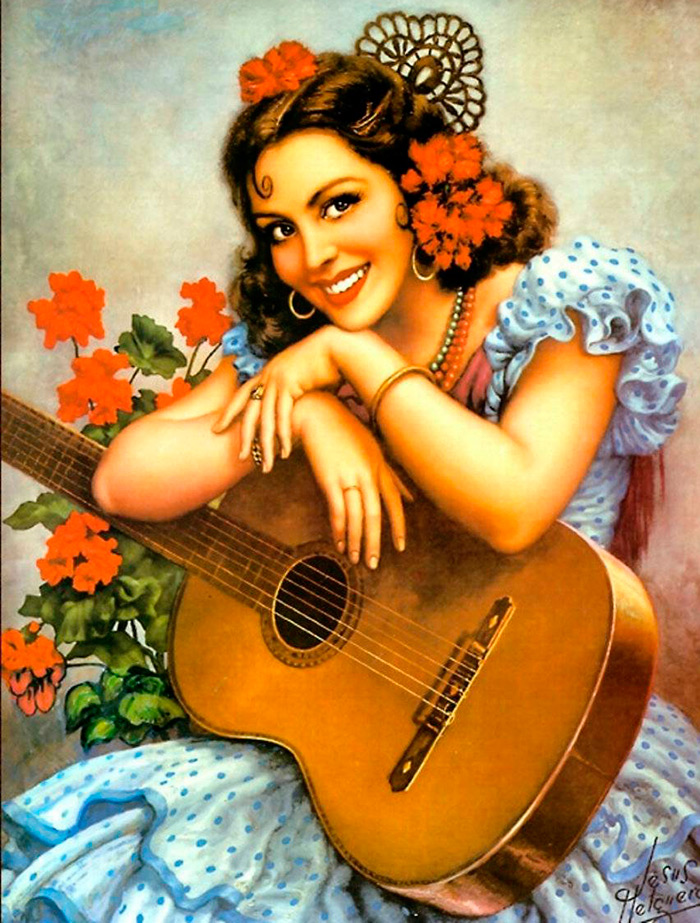
Jesus Halguera (1910-1971)
Do not forget about the Mexican style and fashion designers. From year to year, collections with elements of Mexican national costume appear on the catwalks of Fashion Weeks in Milan, London, New York and Paris. Sometimes the newlyweds are also reminded of the Mexican style.
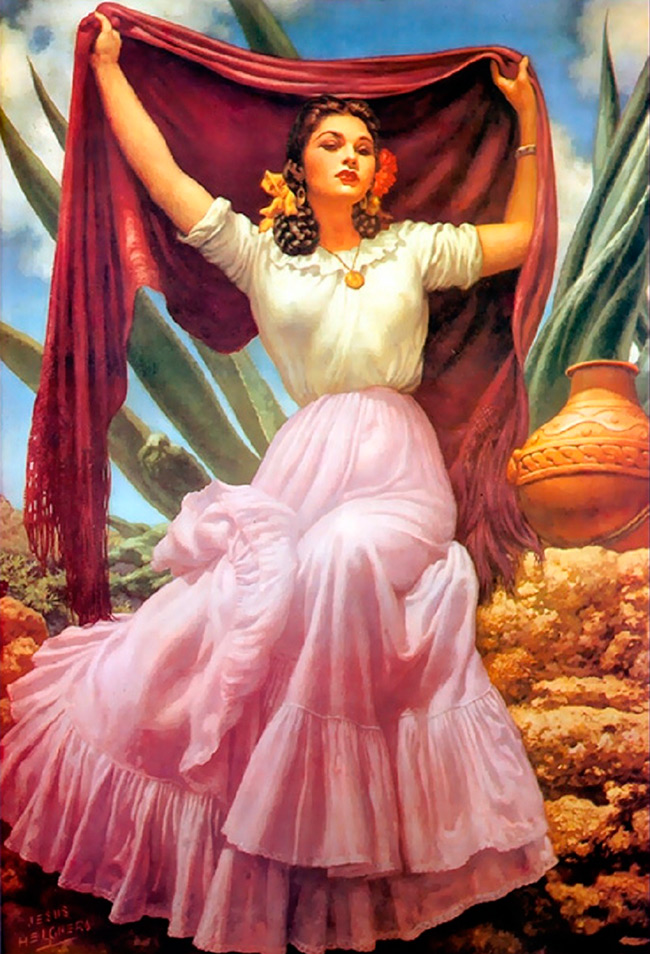
Jesus Halguera (1910-1971)
The fashion for "Mexican" weddings is still relevant today. Such weddings are unusual and colorful. A groom in a sombrero, a bride in a bright Mexican dress, and, of course, mariachi - this is how musicians are called in Mexico. The word "mariachi" itself is of French origin - from "mariage", which means "marriage", "wedding". And this is also no coincidence, traditionally mariachi musicians play at weddings.
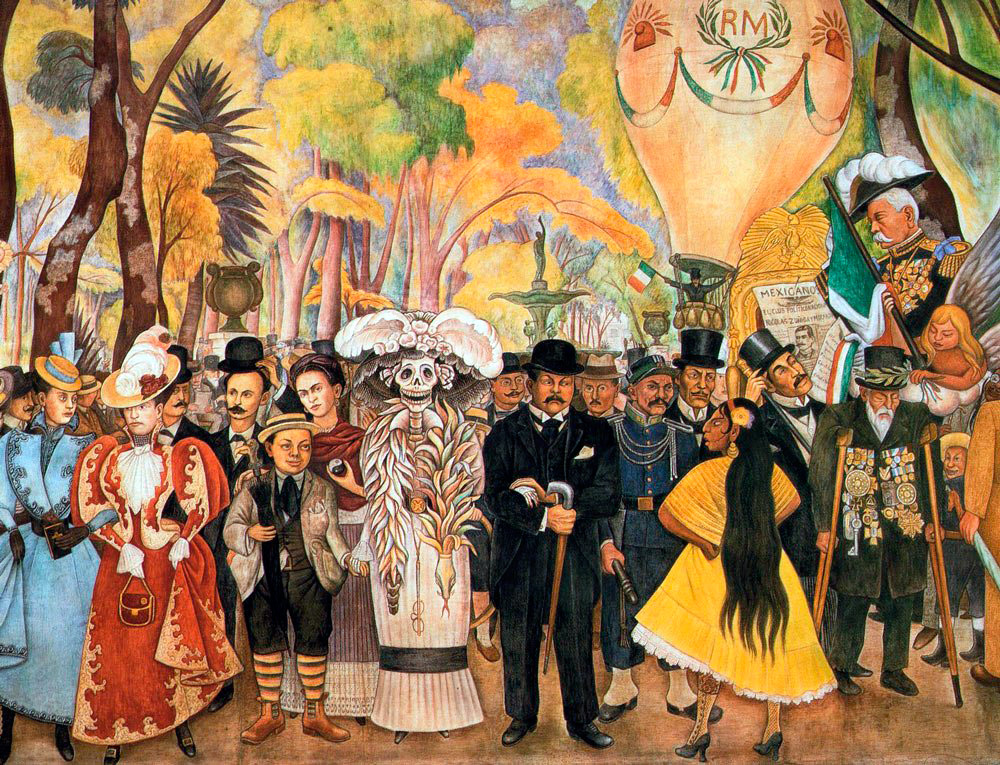
Diego Rivera (1886-1957)
A Sunday dream in Alameda Park. Central segment
The origins of the traditional Mexican costume are to be found in the interweaving of the traditions of many cultures. Firstly, these are the Indians. The Mayan and Aztec tribes once lived on the territory of Mexico.

Jesus Halguera (1910-1971)
Mayan men wore loinclothwhich was called ash and was decorated with feathers and embroidery. To this day, embroidery is an indispensable element of the Mexican costume, while its patterns are borrowed from various Indian tribes who once lived in Mexico. Including the Mayan tribe.

Ribbon (part of the female Mayan costume)
On clothes today, Mexicans can embroider squares, lines, rhombuses, pyramids. In ancient times, the Indians believed that these patterns could protect and protect from evil spirits. In addition to geometric shapes, today you can also see images of cacti on Mexican clothes, and cacti grow all over Mexico, chrysanthemums and skulls. Images of skulls are also associated with the pre-Christian culture of the indigenous population of Mexico. But thanks to Christianity, images of the Virgin Mary can be seen on the clothes of Mexicans.
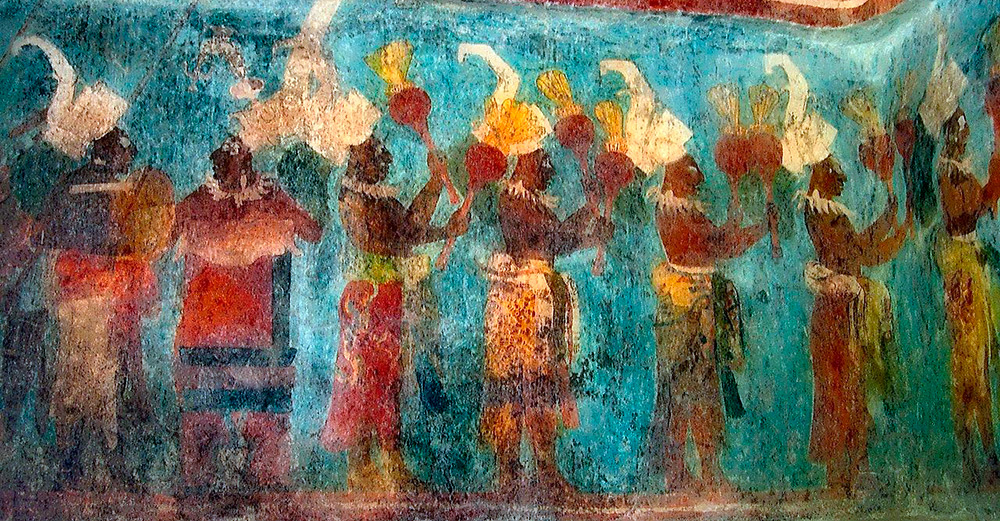
Wall murals in Bonampak
Mayan ruins have been found in this area.
In addition to the loincloth, Mayan men also wore a party cape made from a rectangular piece of cloth. Maya of noble birth could wear a long shirt and another loincloth, somewhat reminiscent of a skirt.
Mayan women wore a cube, a long dress. Sometimes a petticoat could be worn with a dress. However, the skirt could be worn separately. In this case, the chest remained open. Among the Maya, like many ancient tribes, it was believed that women and men should cover only the lower half of the body, while the upper part of the body could be naked.
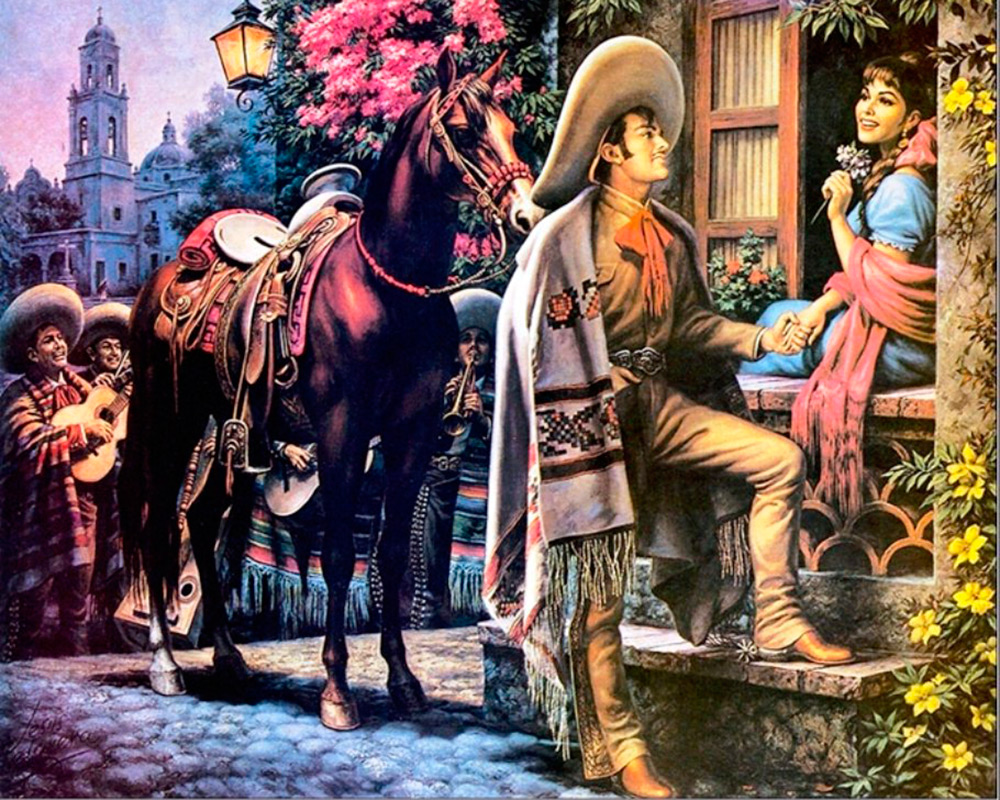
Jesus Halguera (1910-1971)
Maya women, like men, could wear a cape. It was the capes of the Indian tribes that became the prototype of the modern Mexican poncho. However, it is believed that the clothing of the Mapuche tribe, which once lived in Chile, became the prototype of the poncho. These clothes were borrowed by the Spaniards. And then it spread to all American territories that were once Mexican colonies. Including ponchos began to be worn in Mexico.
A poncho is a garment shaped like a large rectangular piece of fabric with a hole for the head in the middle.
Another Indian tribe that influenced the traditional costume of Mexico is the Aztecs.
The civilization of the Aztecs, which left behind a great cultural heritage, existed in the XIV-XVI centuries. The capital of the Aztecs was the city of Tenochtitlan. Today in its place is Mexico City - the capital of Mexico.
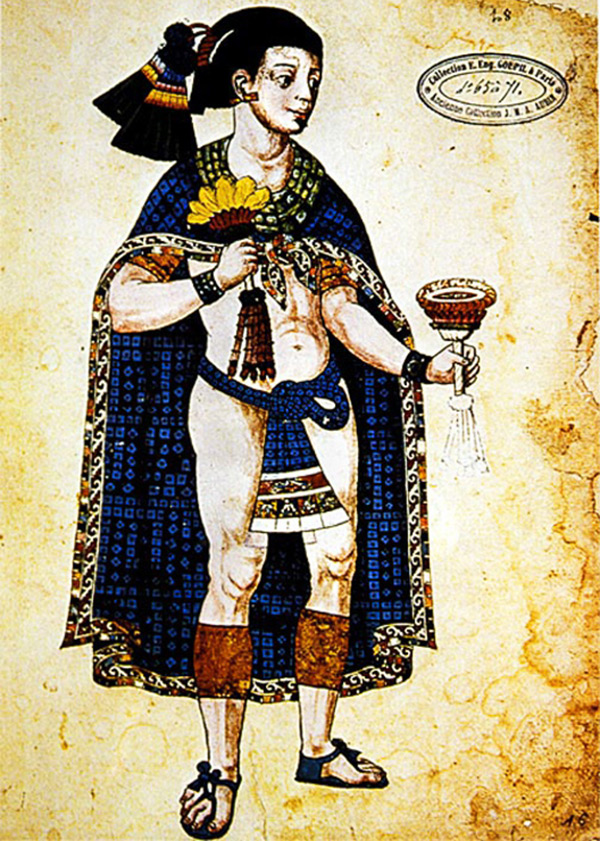
Aztec noble costume
Drawing of the 17th century.
Aztec clothing, like Mayan clothing, was also richly decorated with ornaments. It was on the clothes of the Aztecs that one could see images of cacti, which are still popular in Mexico, geometric patterns, drawings of animals - snakes, butterflies, rabbits.
Men of the Aztec tribe wore a loincloth - mashtlatl and a cloak in the form of a rectangular piece of fabric - tilmatli. Also, men could wear a tight-fitting quilted shirt that replaced armor - itskaupilli. This shirt was worn by warriors. And a chicolla tunic with short sleeves.
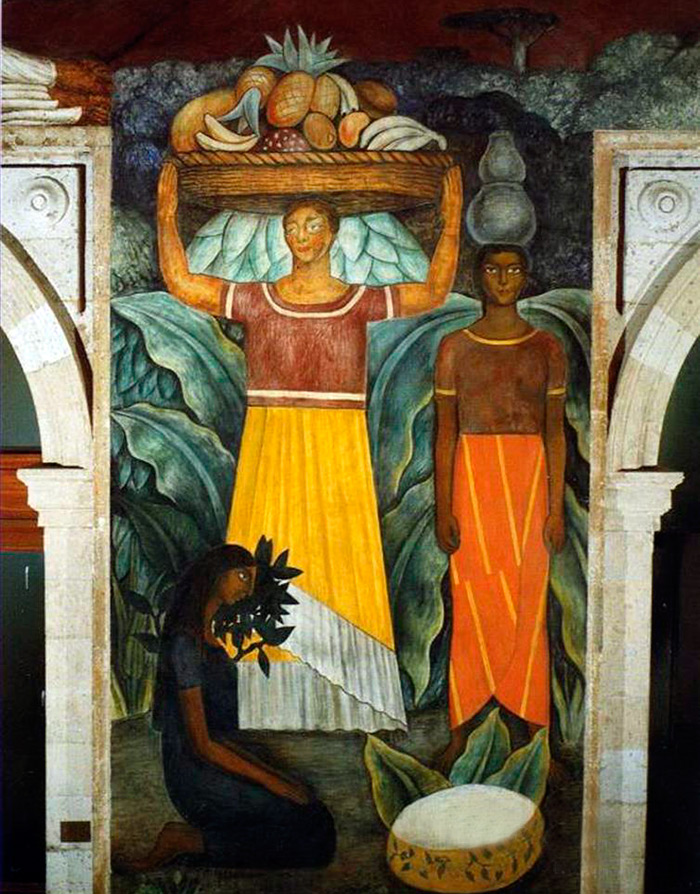
Diego Rivera (1886-1957)
Women of Tijuana
The clothes of representatives of different classes differed in their color and patterns. Thus, the cloak (tilmatli) of the priests was decorated with images of skulls and painted black or dark green. The warriors wore red cloaks, and the emperor's cloak was blue-green.
The women of the Aztec tribe wore long skirts. Representatives of the more noble classes also wore long blouses with embroidery around the neck - wipil.
To this day, the traditional version of the Mexican women's suit is a blouse and a wide long skirt.
Also, women of the Aztec tribe could wear the kechkemitl capes. All the clothes were bright and decorated with embroidery.
In the 16th century, the Spaniards landed on the shores of modern Mexico. In those times Spain was considered a stronghold of the Catholic Church in Europe... And the influence of Christianity on the culture of Mexico was also great.
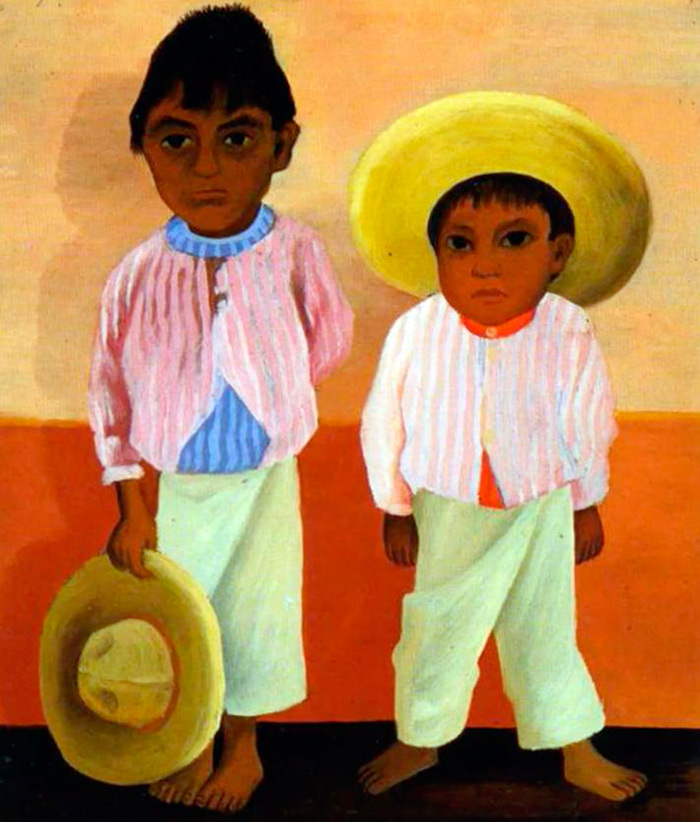
Diego Rivera (1886-1957)
My godfather's sons
However, in the traditional Mexican costume, the influence of Spain manifested itself in the headdresses. The national Mexican headdress is a sombrero hat.
Sombrero (from the Spanish "sombrero" - "hat") is a headdress with a high cone-shaped crown and usually with rounded edges of wide brim.
A cheaper option for a sombrero hat is a hat made from straw. More expensive is a felt hat.
In Spain, a sombrero was called any headdress with a wide brim. The name itself most likely comes from the Spanish word "sombra", which means "shadow".
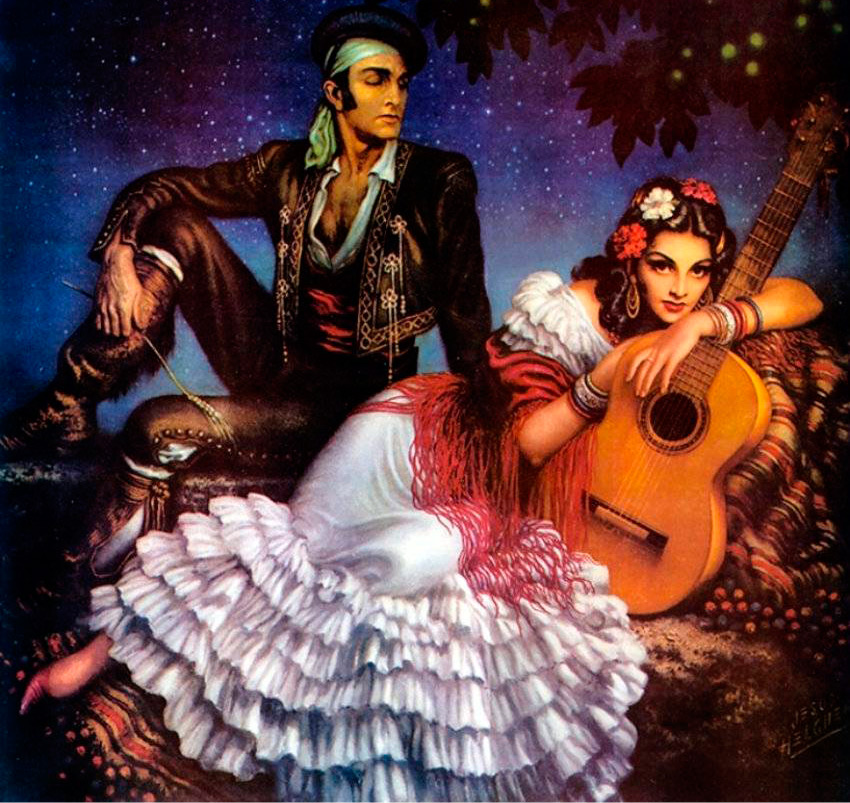
Jesus Halguera (1910-1971)
In addition to sombreros, ponchos, fluffy skirts and flowered dresses, the charro costume - the costume of Mexican Mariachi musicians - can also be attributed to the traditional Mexican costume.
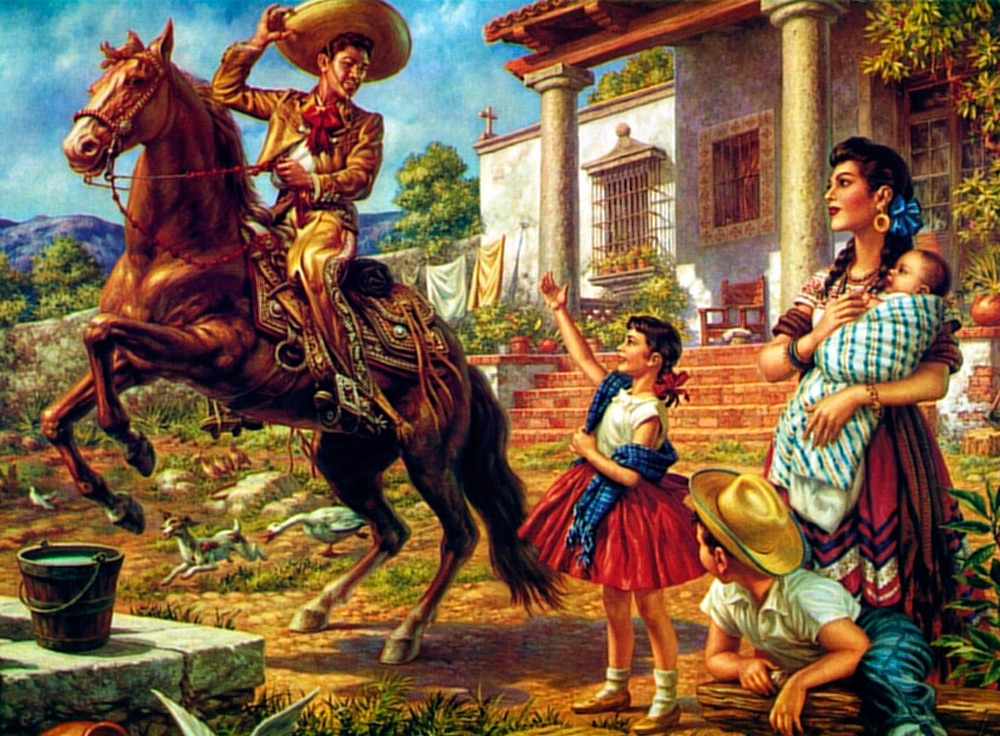
Jesus Halguera (1910-1971)
Elements of this costume were borrowed by Mexican musicians from the clothes of wealthy landowners.
A charro costume is a jacket, skinny pants and a wide-brimmed hat, and a neckerchief.
The colors of this suit are black as the main color, combined with silver. As for the Mexican musicians, in a black suit, according to a tradition that originated in the 19th century, they most often performed at special events, for example, at a wedding or at a funeral. And the mariachi dressed in white suits sang songs for the ladies.
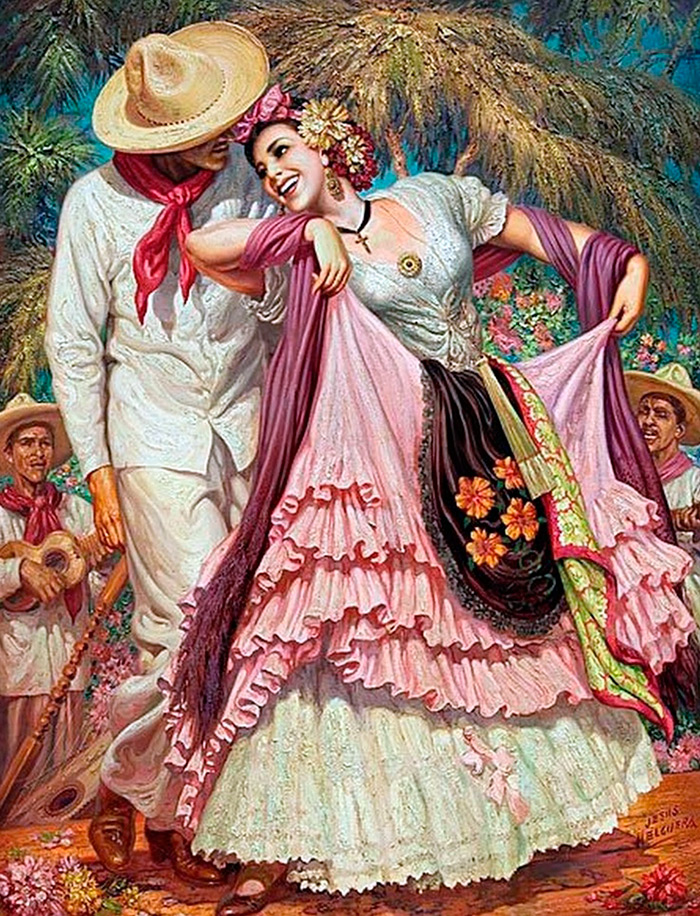
Jesus Halguera (1910-1971)
Comments and Reviews
Add a comment
Rating news
Shades of clothing that make women look younger
What shades of hair make women younger: rules and photos
Funny wedding dresses - photos and ideas
12 most expensive down jackets for the winter
How to look 25 at 40: tips from supermodels
Beautiful schoolgirls
Anti-aging haircuts and hairstyles for women
Fashionable skirts for autumn and winter
Fashionable women's trousers for the cold season
Fashionable and stylish sandals for summer 2024
Spring-summer 2024
 Fashionable dresses and tops with thin spaghetti straps
Fashionable dresses and tops with thin spaghetti straps
 Bandana tops: how to wear stylishly and beautifully
Bandana tops: how to wear stylishly and beautifully
 How to put together the perfect men's wardrobe for the summer
How to put together the perfect men's wardrobe for the summer
 Fashionable shorts for spring-summer 2024
Fashionable shorts for spring-summer 2024
 Fashionable skirts for spring-summer 2024: a guide to online shopping
Fashionable skirts for spring-summer 2024: a guide to online shopping
 The most fashionable dresses spring-summer 2024: styles and colors
The most fashionable dresses spring-summer 2024: styles and colors
 Fashionable total look 2024: image ideas and trends
Fashionable total look 2024: image ideas and trends
